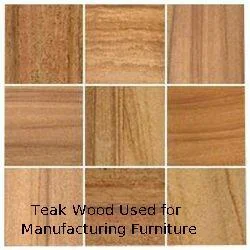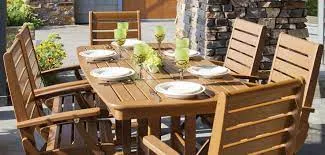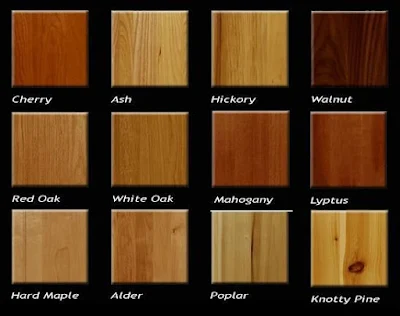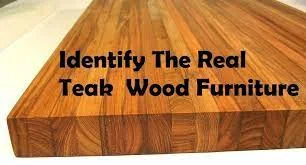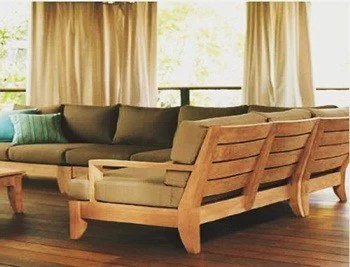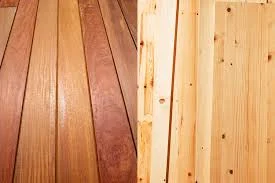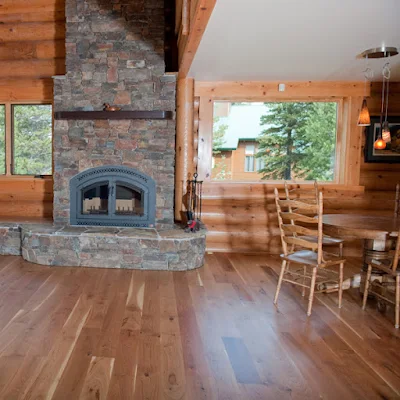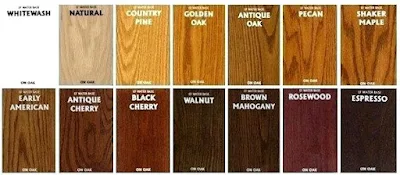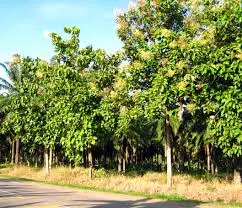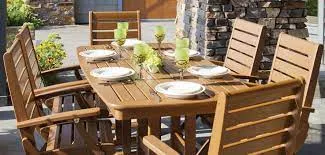Teak Wood
Teak wood is fascinating, arising out of the jungles of Southeast Asia. The trees are among the not many which produce high measures of oil and wax, which serve to shield them from the hot, moist conditions and nuisances. The wood normally holds these extractives, furnishing things produced using teak with worked in security from the components. Therefore, Teak is valued for open air furniture.
The color of teak wood changes somewhat after some time the vast majority know about it in its impressive brownish honey-brilliant tint, however it begins somewhat dim and smeared. As it rots, teak will ultimately go to a brilliant dim color.
Characteristics of Teak Wood
Color Honey Brown or Tawny Gold
Source Teak Tree (Tectona grandis)
Hardness 1,155 on the Janka scale
Cost $7 to $41 per board foot
Normal Uses Outdoor Furniture, Decks, Boats, Carving, Veneers
The toughness and excellent coloring of teak wood makes it one of the most valued and costly wood types, however mounting worries about its eco-amicability and manageability regularly make individuals search out other options.
Every now and again Asked Questions About Teak Wood
Considering that teak wood isn't seen all the time and accompanies one of the greatest cost labels of any species, individuals are frequently blasting at the creases with inquiries concerning it. We'll turn out probably the most widely recognized underneath.
What Color is Teak Wood?
Teak wood is somewhat of a chameleon. While most wood will go through some minor color moves (a dull wood will ease up and a light-colored wood will obscure), teak is all around the guide. Nonetheless, it adheres to a guideline design.
At the point when originally cut, teak wood looks dull and splotchy. Mineral dashes of changing colors going through it are normal as well. Notwithstanding, a great many people know about teak in its even brownish gold or honey earthy colored tint, and that is what comes straightaway. It's this dignified look that makes it a genuine enticement in top of the line plan. As it rots, teak will turn a light or medium dim tone.
For what reason Does Teak Change Colors Over Time?
Teak is stacked with oils and waxes, otherwise called extractives. These mixtures give teak its normal water resistance, dry decay resistance, and implicit irritation control, in addition to cause the sheets to feel somewhat waxy. At the point when the sheets are cut, those extractives start cooperating with the climate; synthetic responses happen as they meet with the air and daylight. This is the reason more up to date loads up can once in a while give unpracticed teak purchasers a significant dread—they're expecting the brilliant tone and end up with a smeared dull spots and a rainbow of mineral streaks. It's as yet delightful, yet it's not the look teak is known for.
The more drawn out teak is presented to daylight, the more those colors relax and mix together, eventually bringing about the brownish gold tint individuals perceive. The time span this takes will change completely dependent on openness to the components, basically UV beams. This as a primary concern, a teak deck will foster the honey color rather rapidly, maybe in days or weeks, while a board wrapped up a storeroom could hold a portion of its dull blotchiness for months or a long time.
At last, teak will become dark for a similar explanation. Nonetheless, it's regularly treated with something to shield it from UV beams, so it might actually hold the brilliant tone for quite a long time or even many years, contingent upon the finish and care.
What are the Common Uses of Teak Wood?
Teak wood was at first valued in boat making, however it is utilized in a wide assortment of utilizations today. It's water-resistance makes it well known for outside furnishings, decks, and shower stools, however it gets a decent measure of utilization inside for furniture, ground surface, facade, and cutting as well.
What Does the Grain Pattern of Teak Wood Look Like?
Teak wood has a tight straight grain, in spite of the fact that it can once in a while have a wavy or interlocked grain as well.
Is Teak a Hardwood or a Softwood?
There's regularly some disarray with regards to what the expressions "hardwood" and "softwood" truly mean. Hardwood comes from dicots, which are leafier trees, and incorporate assortments like pecan, cherry, oak, and maple. Softwood comes from gymnosperms, which are conifers, and incorporate assortments like fir, pine, and cedar.
Actually, teak wood comes from eudicots, which have additionally been alluded to as non-magnoliid dicots, so they're verdant trees. That makes teak a hardwood.
How Dense/Hard is Cherry Wood?
The people who need to find out about the strength of teak will need to work with Janka numbers. The Janka hardness test includes packing a steel ball into a piece of wood until it is mostly installed and estimating the number of pounds of power it takes to accomplish the errand. The last number might be meant as pounds of power (lbf) or essentially demonstrate the number followed by "Janka." Naturally, the higher the number is, the denser, and in this way solid, the wood is.
Infographic: Janka Values of North American Hardwoods
To give a model, sugar maple sits close to the highest point of the scale at 1,450 Janka, while eastern white pine is nearer to the base at only 380 Janka. Teak is 1,155 Janka, which puts it somewhere close to dark pecan and yellow birch.
Peruse more with regards to the Janka Values of North American Hardwoods.
Where Does Teak Wood Come From?
Teak wood comes from teak trees, additionally known by the logical name tectona grandis. These trees are local to the jungles of Southeast Asia, however certain regions all through Africa and the Caribbean have figured out how to develop it now as well. Along these lines, Teak conveys with it a high carbon impression and a high capability of supporting coordinated wrongdoing and deforestation.
Could Teak Furniture Go Outside?
Teak's normal properties guarantee it has great resistance to decay and mold, so it's regularly used to make outside furnishings. In any case, it will ultimately spoil in the event that left outside and the color will move significantly because of the consistent UV openness.
When in doubt of thumb, we don't suggest putting any regular wood item outside. Our all-climate Polywood outside furniture is an incredible other option. It seems as though normal wood, however is produced using reused high-thickness plastic. That makes it support free and permits us to offer a lifetime ensure on it.
Is Teak Wood Eco-accommodating? Are Teak Trees Endangered?
All you need to know about the different colours of teak wood.
As a rule, teak wood is not economical. It has historically been related with deforestation and illicit collecting. While there are some supportable teak manors presently, it's undeniably challenging to track down new teak furniture that has been produced using economically reaped wood and surprisingly harder to ensure that the makers who guarantee to utilize reasonably gathered teak truly are. It's additionally significant that it can take a teak tree an entire 80 years to arrive at development and be prepared for gather, so regardless of whether new trees are planted to represent those collected, it's anything but a genuine substitution.
Options in contrast to Teak
Since the natural expense of utilizing teak is high, buying teak options is ideal. At Vermont Woods Studios, all our regular wood furniture is worked here in the United States by gifted experts who utilize homegrown hardwoods and care about quality and supportability. It's this devotion, combined with our quality assurance and first rate administration, that have procured us incalculable five-star audits.
For indoor use, we think the best option in contrast to teak is cherry wood. For outside use, consider cedar, which develops locally, or look at our polywood open air furniture produced using reused HDPE plastic.


